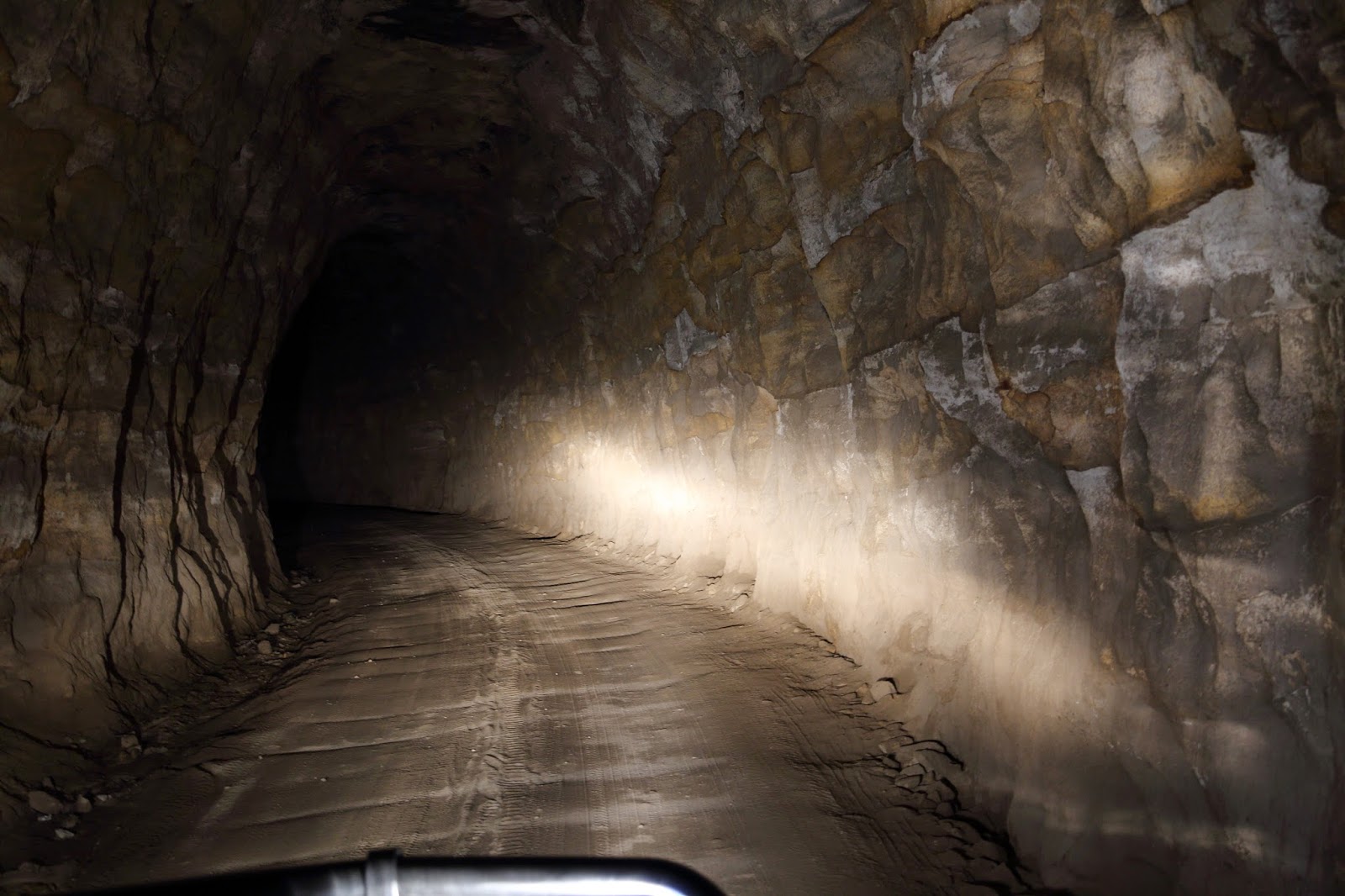Today's is a very special post-partly inspired by David Attenborough's documentary 'Life in the Undergrowth'. In episode 3, Attenborough visits New Zealand's Waitomo Caves in which the larvae of fungus gnats illuminate the cave, and use their beaded filaments to lure their prey. In Australia, in the Blue Mountains region is a similar place called the 'Glow worm tunnel' - this is the story of our visit there.
After a 30 Km off-road bumpy drive which took us through some beautiful landscapes and a tunnel, we reached a desolate corner in the Wollemi National Park.
It was a further 2 Km trek to the coveted tunnel.
A special hug to my wife, Aarina, here, who despite her apprehensions of dark and desolates caves, decided to accompany me into the tunnel.
The entrance to the tunnel was partly covered by overhanging ferns and the floor was covered by a gently flowing stream of water.
Inside the tunnel its completely dark, eerily quiet. All I could hear was trickling water, my own heart beat and Aari's footsteps.
The larvae of a fungus gnat (small, short lived fly) resides in these tunnel. They are called Arachnocampa richardsae and they can create their own light or scientifically speaking, have bio-luminescence. They sit put on the walls of these caves or tunnel and drop in a sticky silk line. This line has mucus on it which look like beaded necklaces. Any flying insect that touches these lines, stick to it and becomes the larva's meal.
To attract insects close to their snares, the larva glows. Many insects are attracted to this light and inadvertently, get stuck onto the sticky snare, the gnat then pulls the snare and feeds on the prey.
To see the glow, we switched off our lights and waited for our eyes to adjust to the darkness. Slowly, we could see the entire tunnel beautifully illuminated, like stars that illuminate a dark sky.
A feeling of joy, ecstasy and accomplishment filled us up! A delightful warm embrace in a silent cave studded with glowing worms is something that we will never wish to forget!
After a 30 Km off-road bumpy drive which took us through some beautiful landscapes and a tunnel, we reached a desolate corner in the Wollemi National Park.
It was a further 2 Km trek to the coveted tunnel.
The entrance to the tunnel was partly covered by overhanging ferns and the floor was covered by a gently flowing stream of water.
Inside the tunnel its completely dark, eerily quiet. All I could hear was trickling water, my own heart beat and Aari's footsteps.
To attract insects close to their snares, the larva glows. Many insects are attracted to this light and inadvertently, get stuck onto the sticky snare, the gnat then pulls the snare and feeds on the prey.
To see the glow, we switched off our lights and waited for our eyes to adjust to the darkness. Slowly, we could see the entire tunnel beautifully illuminated, like stars that illuminate a dark sky.
A feeling of joy, ecstasy and accomplishment filled us up! A delightful warm embrace in a silent cave studded with glowing worms is something that we will never wish to forget!






















